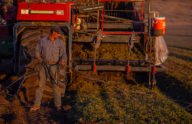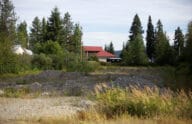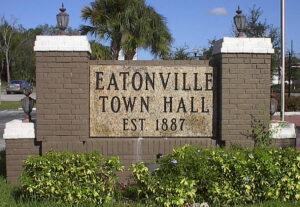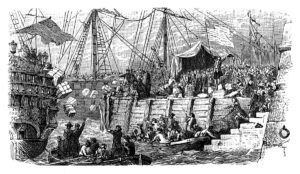Property rights in Jamestown: Bowling and starving in the New World
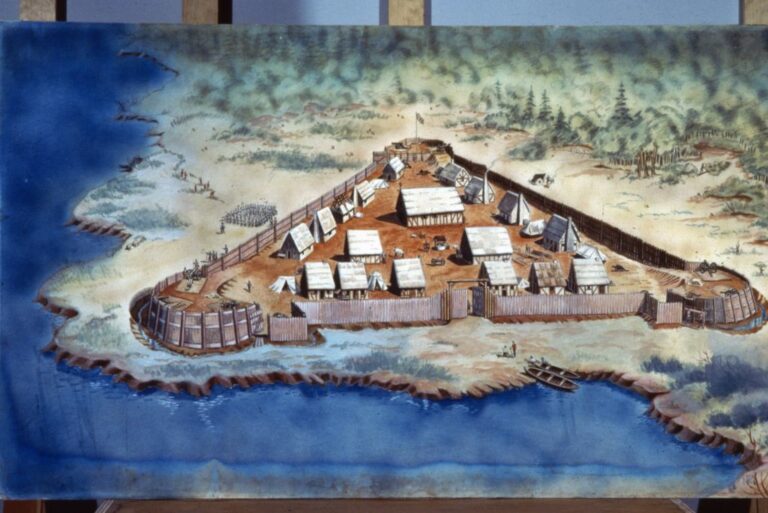
A few miles from Williamsburg, Virginia, there is a wonderful museum dedicated to the Jamestown Colony. Along the banks of the James River, the museum boasts a re-creation of the stockades, living and work quarters, a few early colony ships, and all those things that make up a colony of settlers in a brand New World.
What you don’t see are the graves of the hundreds of colonists who died of starvation in the early years. Nor an exhibit dedicated to the sport of bowling.
What is the first thing you might do if there’s not enough food in your community and there’s nowhere you can easily go for more food? What would you do if most of the people you knew were dead of starvation and you stood a pretty good chance of starving next winter yourself? Would you go out and work the farms? Or would you go bowling?
If you were a settler in the Jamestown Colony in 1610 and you couldn’t reap what you sowed, the logical answer is, of course, you’d go bowling.
Bowling in the New World
The money men from England who financed the Jamestown Colony were interested in recouping their investment first, making a profit second, and establishing a thriving colony third. For that reason, these proprietors decreed that all farming would be a common enterprise.
All the crops would be the collective property of the colony, with a good portion of the proceeds returned to the financiers in England to pay off the debts incurred in setting up the colony in the first place. Now, the proprietors weren’t proto-socialists; they just figured they could maximize their profits if their charges over in America didn’t try to grab too much for themselves.
The first three boatloads totaling 105 colonists arrived in May of 1607. There were deer and wild game, food for foraging, and land that could be planted—if the peace with the inhabitants could be kept.
Most of these colonists and those who followed were indentured servants. They had to work for seven years to pay off their passage to America. They had limited means to acquire anything of their own until the end of their servitude. It soon became apparent that deer and berries weren’t enough.
Unknowingly, proprietors had embarked on an experiment in the free-rider problem inherent in all schemes of collectivization. The colonists quickly learned that it made no sense to be the hardest-working farmer if all that work wouldn’t result in getting more food or profit than the laziest farmer would receive. Seven years was seven years, no matter how hard you worked. Or didn’t work.
The problem was more than theoretical. More ships delivered more colonists, and by 1609 there were over 500 settlers in Jamestown. There were some deaths from accidents, disease, and altercations with the local Indians. But in six months there were only about 100 settlers left–and a vast majority of the deaths were due to starvation.
Some colonists ate their dogs and cats. Some ate rats and mice. Some may have eaten their starved-to-death neighbors. One is alleged to have eaten his pregnant wife. When spring rolled around in 1610, they decided to give up and go home. On their way out of the harbor, they saw new ships arriving with more colonists and supplies. They turned around and went back to Jamestown, hoping for help from the new colonists. The new supplies kept them alive.
Shortly thereafter a new governor arrived.
A new governor in town
Governor Thomas Dale was taken aback by what he saw. After hundreds of colonists had died in what they called “the starving time,” he saw the settlers bowling in the streets. They weren’t farming. They weren’t building things. They were… bowling.
Enough was enough. Governor Dale ignored the scheme of the proprietors and gave each of the men three acres of land which they could farm themselves.
It worked. With a stake in their own property and the fruits of their labor, the settlers went to work like they had never worked before. In a few years, the colony was thriving. As John Rolfe, the husband of Pocahontas, put it, the settlers were now busy “gathering and reaping the fruits of their labors with much joy and comfort.”
The hard lesson of Jamestown has been repeated over and over again. Something very similar happened in the Plymouth Colony, which was founded in 1620. At the behest of the financiers, and against the wishes of the colonists, the colony also adopted a collectivist scheme, with most people in indentured servitude. But after years of failure, Governor William Bradford ended the experiment and divvied up the land. As Bradford wrote, “The community was afflicted by an unwillingness to work, by confusion and discontent, by a loss of mutual respect and by a prevailing sense of slavery and injustice. And this among ‘godly and sober men.’ Therefore the land they worked was converted into private property, which brought ‘very good success.’ The colonists immediately became responsible for their own actions.”
Yet some people never learn.
History repeats itself
Where there is no exit from a socialist scheme, people starve. Think of the starvations in the Ukraine during the Stalin era. Think of the millions of dead under Chairman Mao. Think of the periodic starvations in North Korea. Where there is an exit from a socialist nightmare, people will leave. Think of the depopulation of once-prosperous Venezuela. Think of how much America has benefited from Cuban emigres.
Human nature is human nature. When hard work isn’t rewarded, there will be less hard work. A few altruists may give their all in sacrifice for the larger community, but most people need to feed themselves and their families first. Then they can happily be altruistic toward those less able to earn a living.
A robust system of private property is the best way to ensure that people will be rewarded for their work. People will work if they can better themselves through their efforts. And there is another benefit to private property. People will work to ensure that they have the freedoms that are necessary to preserve a system that rewards their labor.
If the government shows a willingness to take away one’s property, people will exercise their rights and put a stop to the abuse. As the Supreme Court put it in a 1972 case, “In fact, a fundamental interdependence exists between the personal right to liberty and the personal right in property. Neither could have meaning without the other.”


